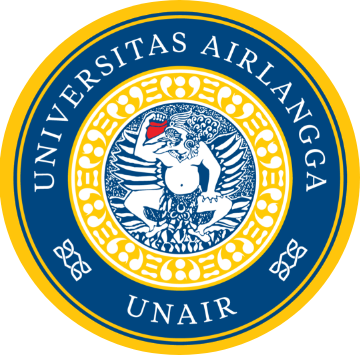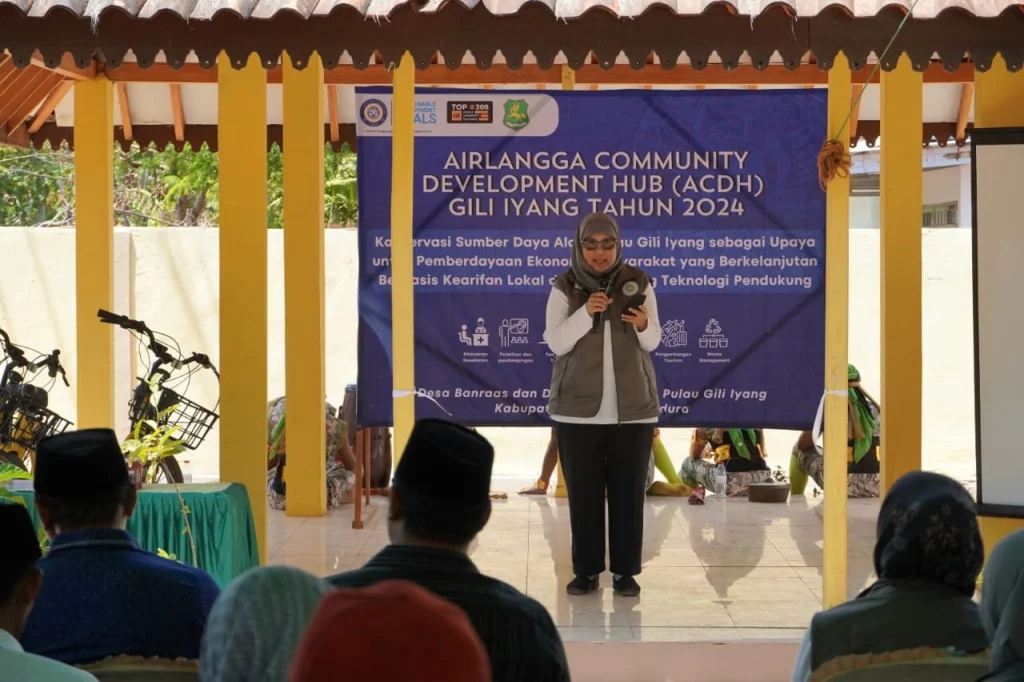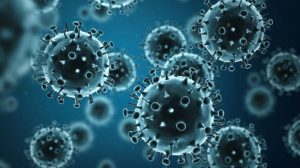UNAIR NEWS – Universitas Airlangga (UNAIR) is working to develop Gili Iyang Island into a pristine, eco-friendly tourist destination similar to Labuan Bajo, aiming to attract both domestic and international visitors. This transformation will involve a multidisciplinary approach, drawing on expertise in areas like environmental science, healthcare, social studies, tourism, education, and technology.
This vision was outlined by UNAIR’s Vice-Rector for Research, Innovation, and Community Development (RICD), Prof. Dr. Ni Nyoman Tri Puspaningsih, during the unveiling of several of UNAIR’s innovative products and initiatives on Gili Iyang Island, Sumenep, on Saturday, October 19, 2024. The six products introduced include the Taman Toga herbal garden from the Faculty of Pharmacy, electric bicycles from FTMM, a water refill station from the Faculty of Science and Technology (FST), solar-powered shelters from FTMM, oxygen monitoring systems from FTMM, and a tourism museum developed by the Faculty of Vocational Studies, with contributions from the Faculty of Pharmacy, the Faculty of Fisheries and Marine Sciences, and the Faculty of Nursing.
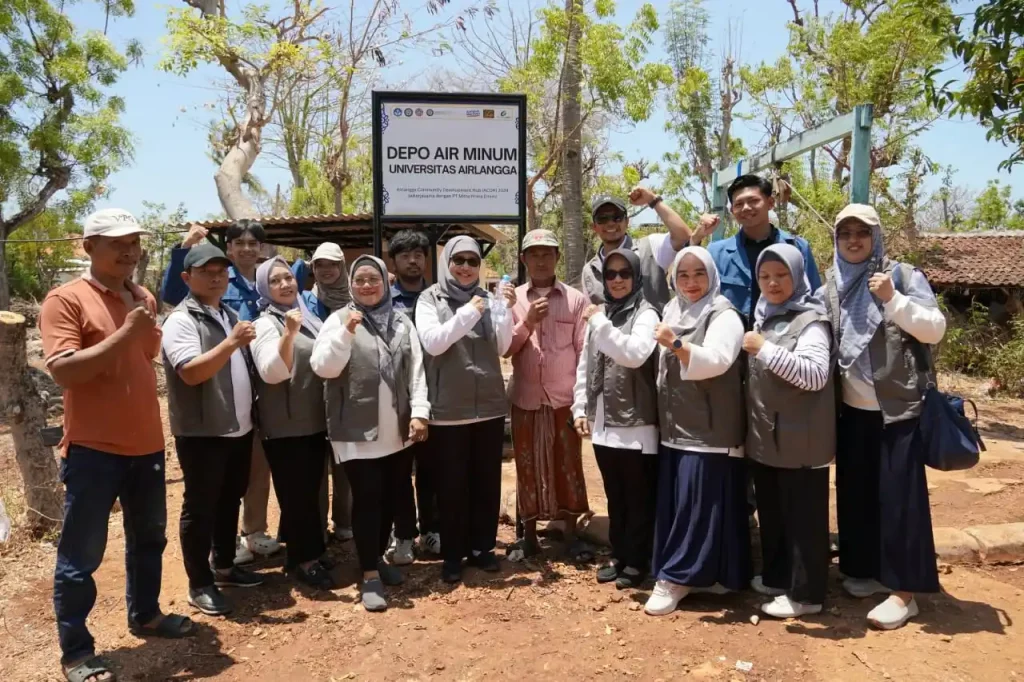
This event was part of the 2024 Airlangga Community Development Hub (ACDH), which began in 2022 as part of UNAIR’s community service program. ACDH focuses on developing green, blue, and digital economies that are rooted in local wisdom in two villages on Gili Iyang Island: Banraas and Bancarama.
“Both local and international tourists will be drawn to a destination that is clean, green, and offers healthy air, with well-managed waste. This is what we aim to create on Gili Iyang, and UNAIR is ready to support the project through a multidisciplinary approach,” said Prof. Puspaningsih.
High oxygen levels
Prof. Puspaningsih pointed out that in Europe, places like Finland have established model green islands, and Gili Iyang has the potential to follow suit. “I’m optimistic that Gili Iyang can progress further, as it naturally enjoys abundant oxygen. We need to preserve these oxygen levels, and if possible, enhance them,” she said.
Prof. Puspaningsih also shared that UNAIR conducted research to understand the island’s unusually high oxygen levels. Satellite studies revealed that the highest oxygen concentrations were found not on land, but along the coastlines, where algae and microplankton thrive. These organisms produce oxygen through photosynthesis by absorbing CO2.
To maintain and boost oxygen levels on Gili Iyang, UNAIR plans to cultivate microalgae on land starting next year, using land owned by a local resident. “Beginning in 2025, UNAIR will plant microalgae on a one-hectare plot, allowing oxygen to be produced from both the sea and the land. This is one of UNAIR’s concrete steps to enhance oxygen levels on Gili Iyang,” Prof. Puspaningsih explained.
Planting beneficial trees
In addition to the microalgae cultivation, Prof. Puspaningsih proposed planting trees and crops around the area that would provide economic benefits to the local community, such as medicinal plants or other crops that could be used in health supplements. This initiative would help turn Gili Iyang into a lush, green region filled with oxygen, surrounded by clean waters, and supported by eco-friendly tourism.
During UNAIR’s visit, Prof. Puspaningsih observed plastic waste along the coastline, highlighting the need for cleanup efforts. UNAIR intends to help the community recycle plastic waste into useful materials and convert straw into livestock feed. “Our goal is to make Gili Iyang a fully integrated environment where sustainable farming, green economy, renewable energy, blue economy, and circular economy can all coexist,” she said.
Potential microalgae
Andi Hamim Zaidan, PhD, Head of UNAIR’s Institute of Life Sciences, Technology, and Engineering (LIHTR), elaborated on UNAIR’s plans to enhance oxygen levels on Gili Iyang through microalgae cultivation on the one-hectare site. The microalgae industry has a wide range of applications, including biodiesel production.
“We’ve designed a machine that can convert microalgae into biodiesel, which can be used to fuel boats. Additionally, microalgae can be used for shrimp, fish, and livestock feed, as well as for supplements, cosmetics, and pharmaceuticals,” Zaidan explained.
Zaidan envisions a future where visitors to Gili Iyang take home microalgae-based products, such as health supplements or facial masks. In the first phase, the microalgae cultivation will have a capacity of 10 tons, with plans for expansion. Gili Iyang will not be expected to maintain its status as having the second-highest oxygen levels in the world but rise to first, bringing significant benefits to the local population.
Mass medical services
In conjunction with the product launch, UNAIR also unveiled a blueprint for developing Gili Iyang as a Green Island and as a partner region for the university. The event’s highlight included a social outreach program offering mass medical services, supported by the Faculty of Medicine, the Faculty of Pharmacy, and the Faculty of Vocational Studies, along with assistance from the Gili Iyang Health Center and the Sumenep Health Department.
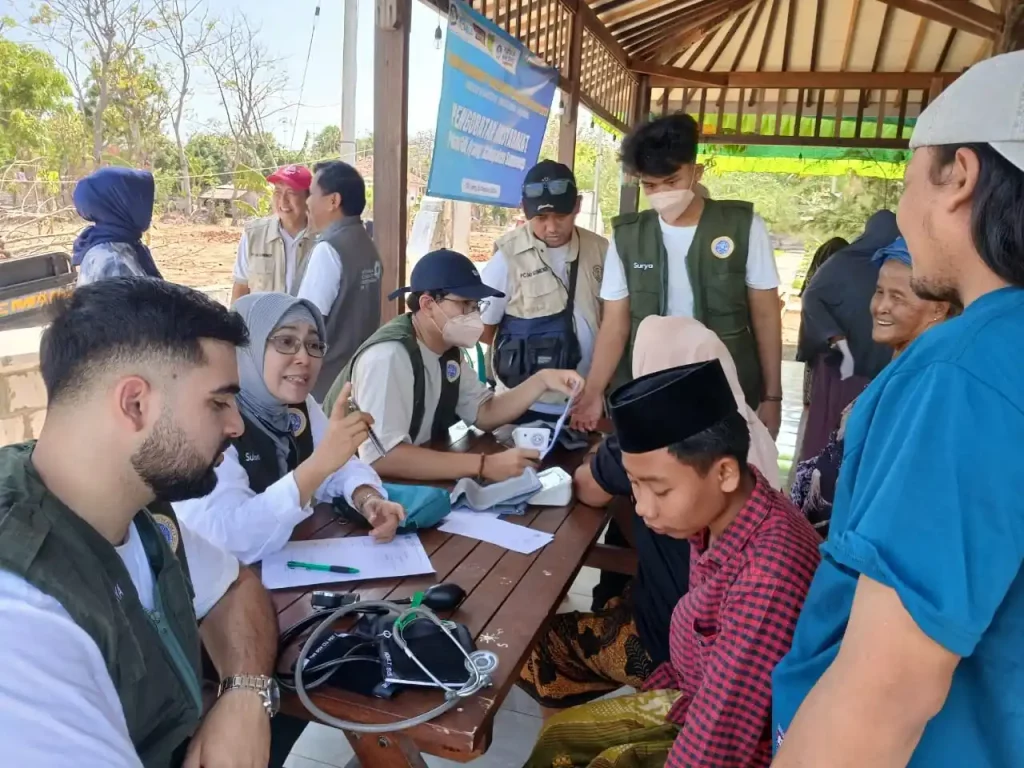
Prof. Dr. Budi Santoso, Dean of UNAIR’s Faculty of Medicine, explained that, in addition to the mass medical treatments, the Faculty of Medicine and the Midwifery Program conducted VIA (Visual Inspection with Acetic Acid) screenings for cervical cancer. By applying acetic acid to the cervix, doctors can detect potential cervical cancer through color changes in the tissue.
Prof. Santoso emphasized that cervical cancer is the third leading cause of cancer-related deaths among women in Indonesia, indicating that the prevalence remains high. The VIA method provides an effective early detection tool. “Since Gili Iyang is quite isolated, we brought simple screening equipment, and given the high prevalence of cervical cancer, we’re offering more than just medical treatments—we’re also providing cancer screenings,” he said.
The mass medical services included basic health checks, supported by the Faculty of Vocational Studies for early screenings and the Faculty of Pharmacy for medication distribution. These services included blood sugar and blood pressure tests.
Author: ACDH team

